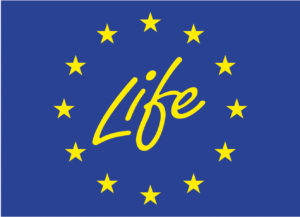A herd of eight European bison has just arrived in the Southern Carpathians rewilding area and will soon join the 57 bison that are already roaming free here. A keystone species, the animals are part of a rewilding initiative which is benefitting local communities.
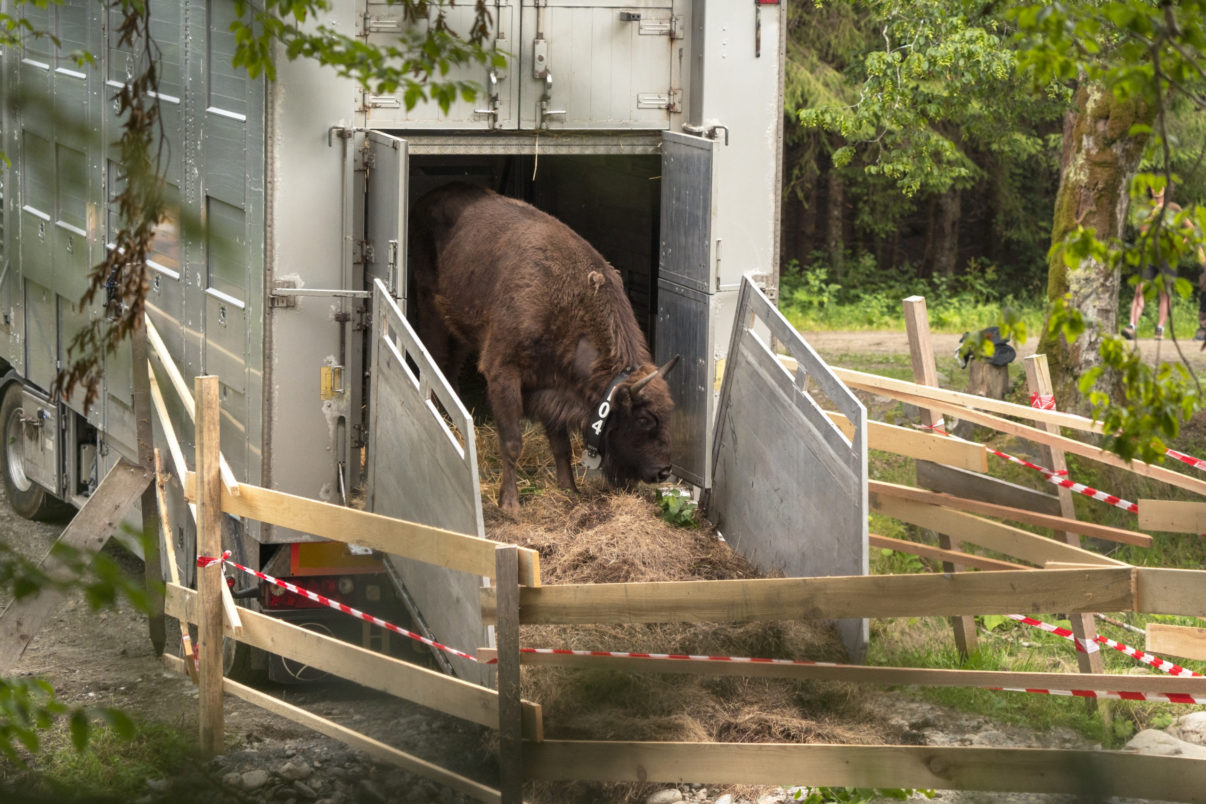
Record-breaking rewilding
A herd of eight European bison (two males, six females) arrived in the Southern Carpathians rewilding area in Romania yesterday evening, and will soon join the 57 animals that are already roaming free here. Rewilding Europe and WWF Romania have been reintroducing bison into the Țarcu Mountains (part of the Southern Carpathians) since 2014, with this record-breaking initiative creating the largest wild bison population in Romania for 200 years.
The European bison is a keystone species which has a large impact on the landscape, allowing many other species of flora and fauna to thrive through their grazing, browsing and other interactions with their habitat. Rewilding Europe and WWF Romania are also using the return of the bison to the Țarcu Mountains as a way to support local communities, by developing the area as a nature tourism destination, and through community-based and educational initiatives, scientific research and technological innovation.
“Every bison reintroduction and every birth in the wild is a success for the conservation of these vulnerable animals,” says Southern Carpathians rewilding team leader Marina Drugă. “Going beyond this, they can benefit local wild nature and people in so many different ways. In this regard, they are more than a keystone species here.”
The journey to freedom
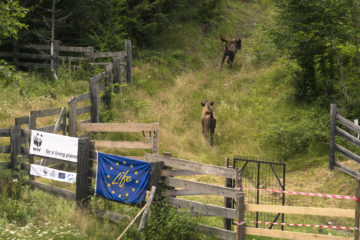
The two males and six females began their long journey to the wild from five reservations in Germany (Wisentgehege Springe, Wisentgehege Donaumoos, Nationalpark Kellerwald-Edersee, Nationalparkverwaltung Bayerischer Wald and Wisentgehege Hardehausen). The Springe reservation hosted the females for several months in order to form a compact herd, a method that ensures the group has a smoother transition to its new environment.
“The transport required extensive preparation,” explains Florin Hălăștăuan, a project officer attached to the Rewilding Southern Carpathians team. “From the bison selection process, which is important for genetic diversity, right through to the fitting of GPS collars, we always focus on the wellbeing and successful reintroduction of the animals.”
The newly translocated bison will initially be kept in an acclimatisation enclosure, where they will be carefully monitored by bison rangers and veterinarians. They will then be released into a far larger fenced area, which gives them the opportunity to explore the local landscape of forests and meadows. Eventually, a few months from today, they will be released into the wild to join the European bison which are already roaming free and supporting themselves in the Țarcu Mountains.
Keeping track
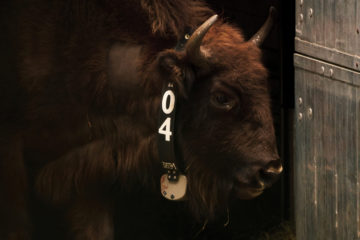
Five of the newly arrived bison (two males and three females) have been fitted with GPS collars. This will enable bison rangers to keep track of the animals’ movements once they have been released into the wild. A number of collars have already been fitted to previously released animals.
Bison rangers continually monitor the wild bison herds in the Țarcu Mountains – one of which contains 24 animals and has at least two newborn calves – through GPS signals, camera traps and thousands of hours spent in the field. The data collected is essential for analysing the behaviour and environmental impact of the bison, enhancing their conservation, and ensuring harmonious relations between bison and local communities.
Back from the brink
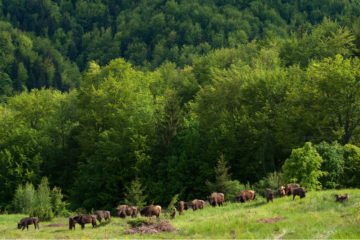
Once widespread across Europe, wild European bison were driven to extinction in the early twentieth century by hunting and habitat loss (they disappeared from Romania around 200 years ago). Thanks to various reintroduction programmes around Europe, around 8500 European bison exist today (with about 6200 living free in the wild). Rewilding Europe is supporting efforts to return this magnificent animal to its ancestral lands, establishing wild bison populations in the Southern Carpathians and Rhodope Mountains and assisting with its comeback elsewhere.
Rewilding Europe and WWF Romania have been working to reestablish a free-roaming population of European bison in the Southern Carpathians rewilding area since 2013. The first two bison releases took place in the Țarcu Mountains in 2014 and 2015. In June 2016, a third bison release took place as part of the European Commission-funded LIFE Bison project, with annual releases now ongoing. The overall objective is to establish a wild bison population that is demographically and genetically viable.
This latest bison reintroduction received essential support from Ioan-Cristian Vela (mayor of Armeniș, the village closest to the release site), as well as representatives of ROMSILVA (the Romanian State Forestry Authority), DSVSA Reșița (Romania’s National Authority for Veterinary Sanitation and Food Safety Reșița), ANANP (Romania’s National Agency for Protected Areas in the territory of Caraș-Severin), and Teregova Silvestry Unit. Ongoing collaboration with Romanian authorities, breeders and local communities has been critical to the success of Rewilding Europe and WWF Romania’s bison rewilding initiative.
Want to know more?
- Rewilding Europe’s work in the Southern Carpathians
- LIFE Bison project
- Track reintroduced bison in the Southern Carpathians with the European Safari Company
- Rewilding Southern Carpathians on Facebook

